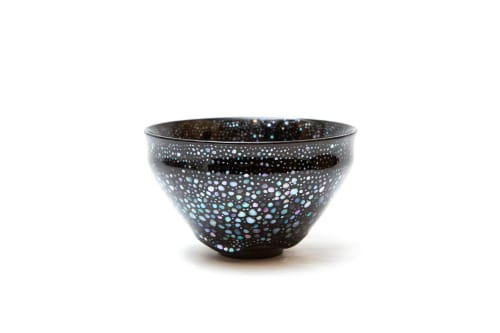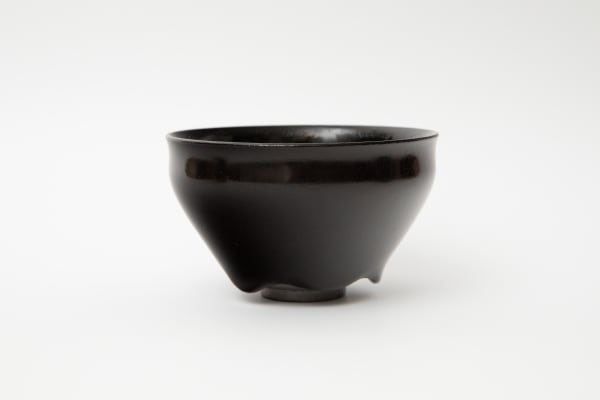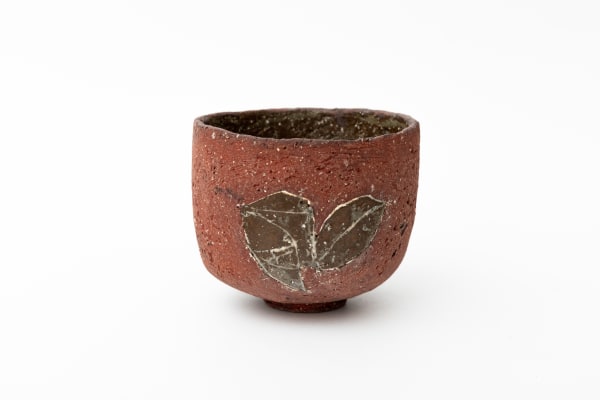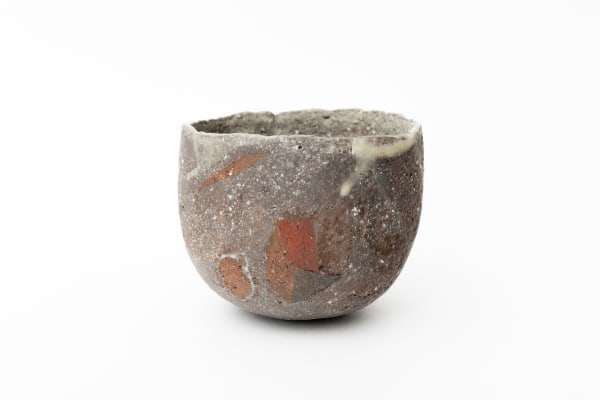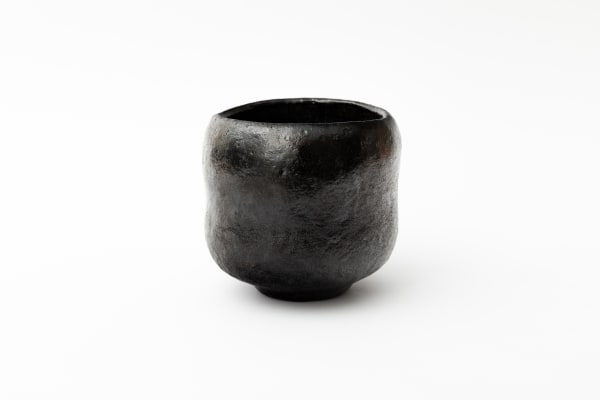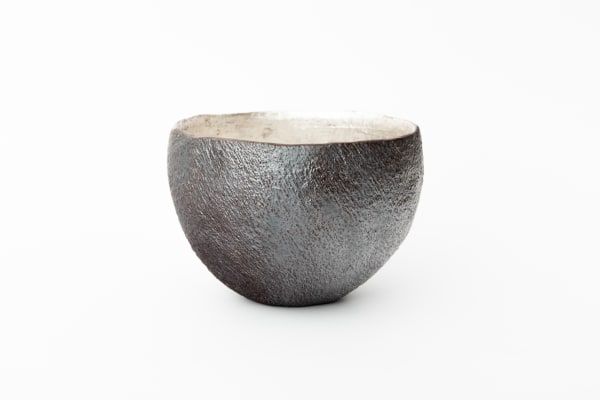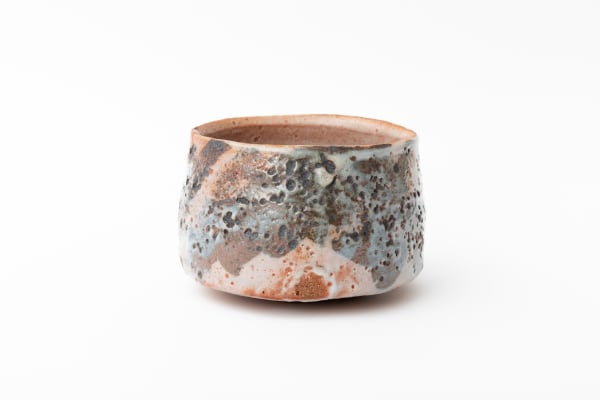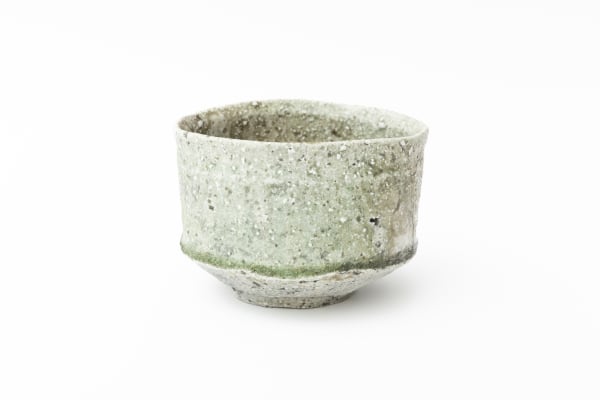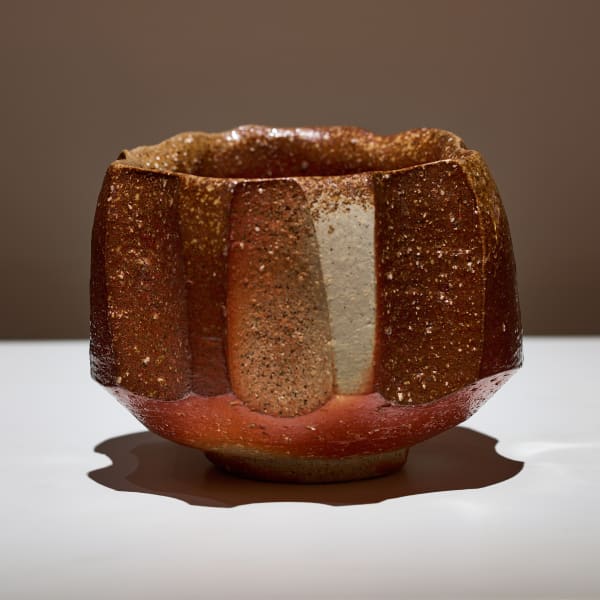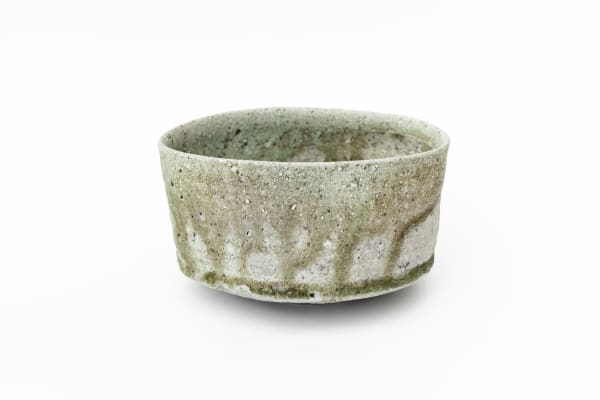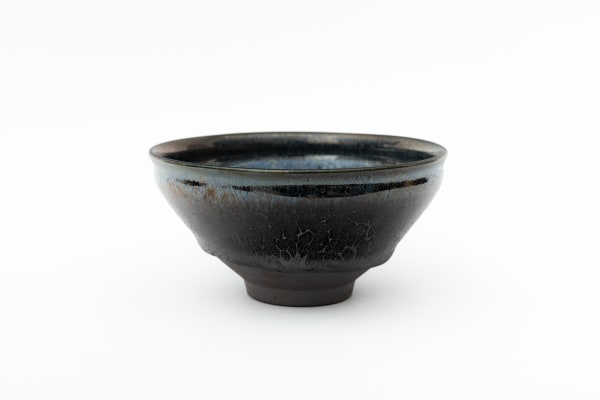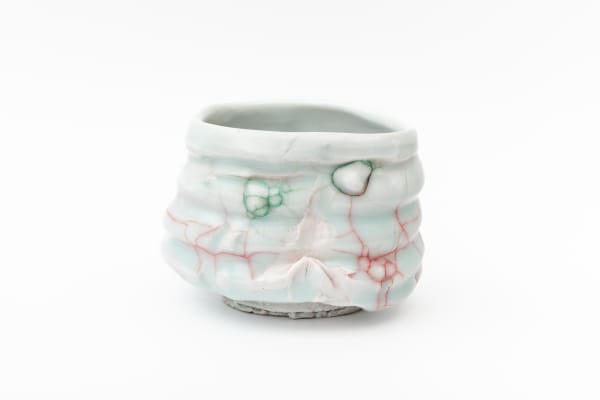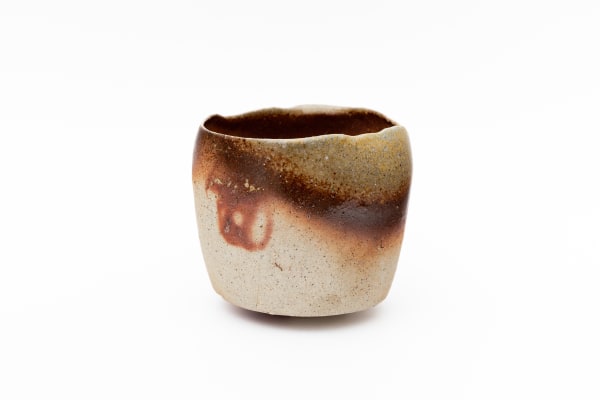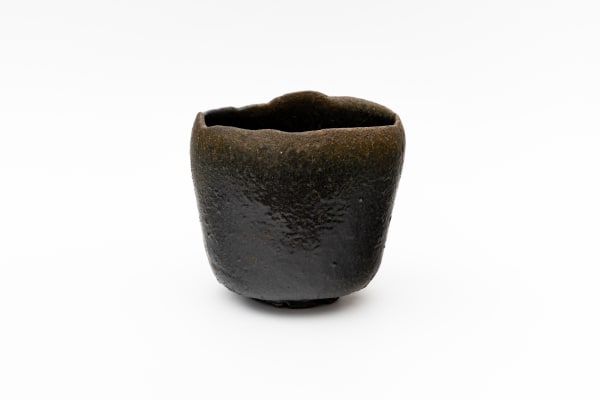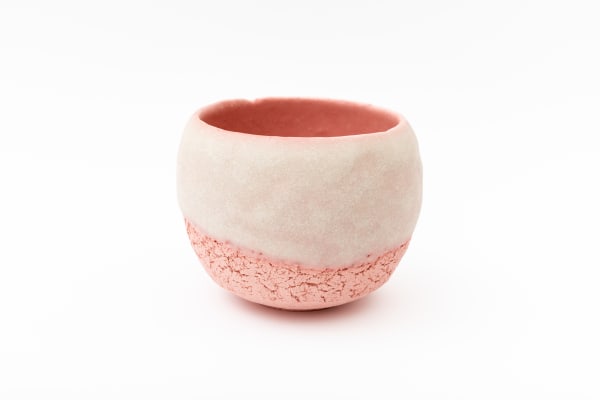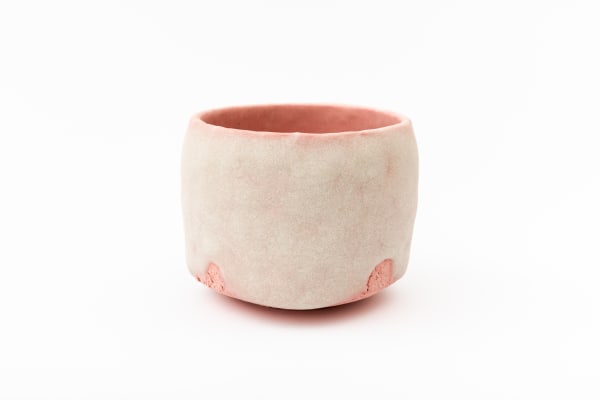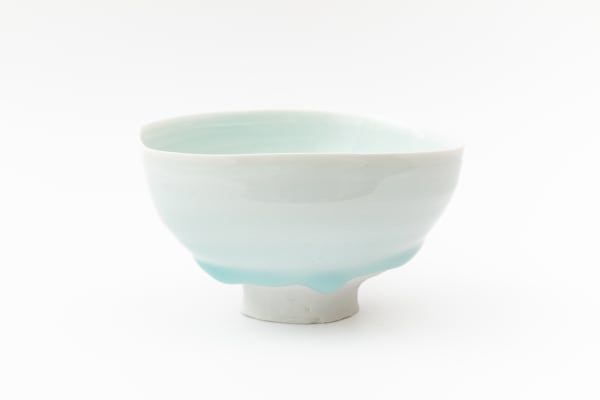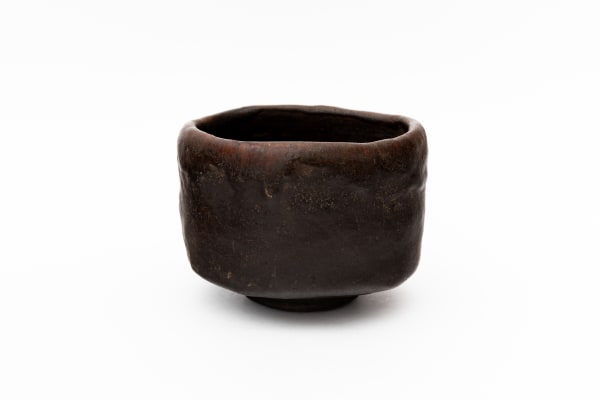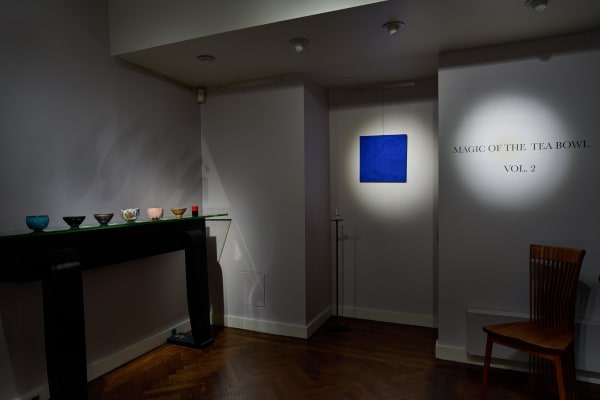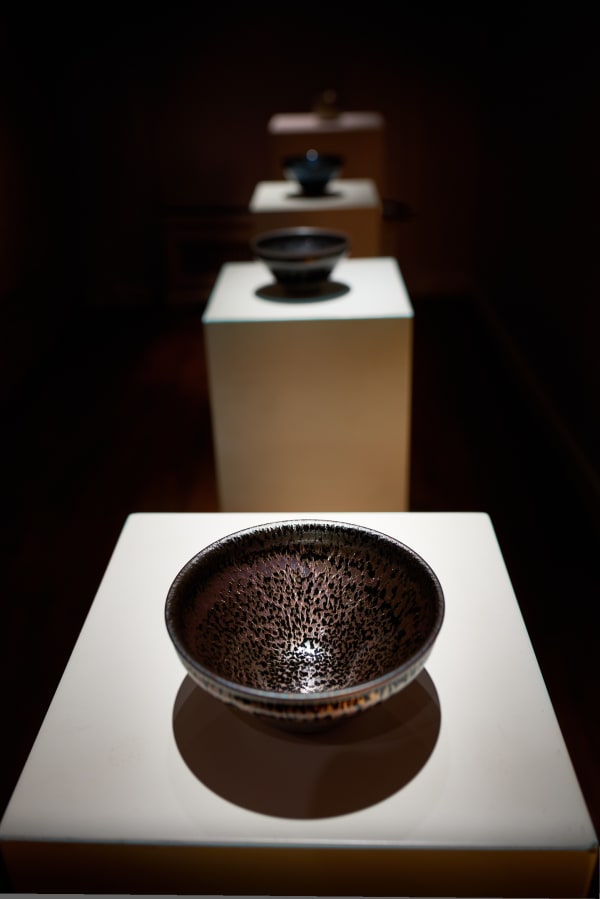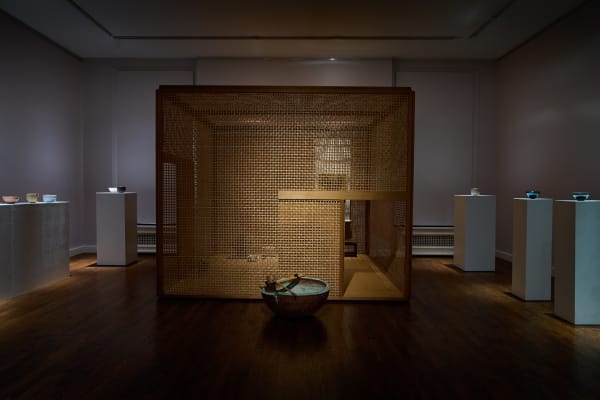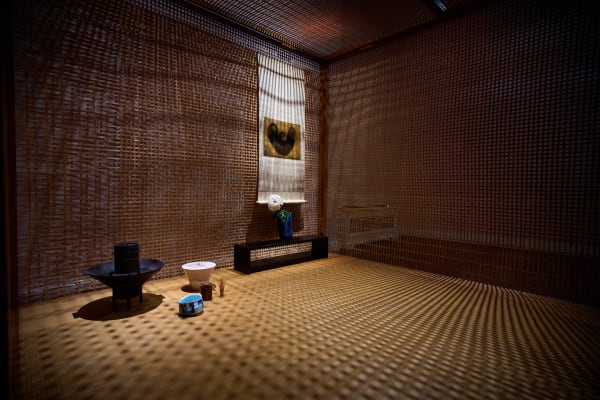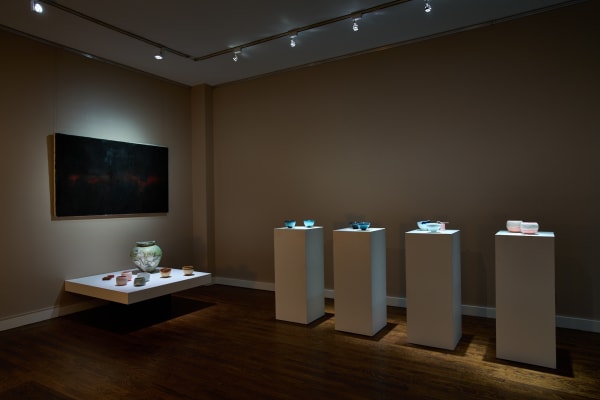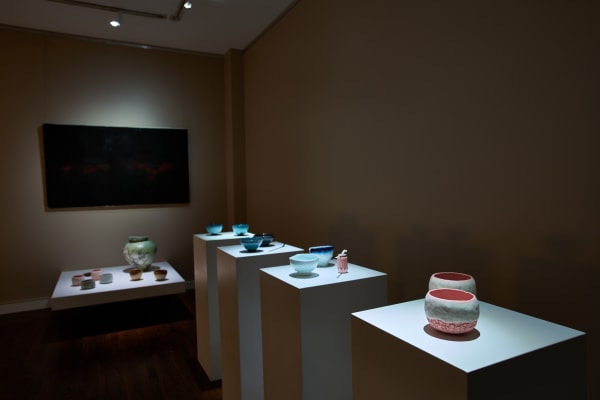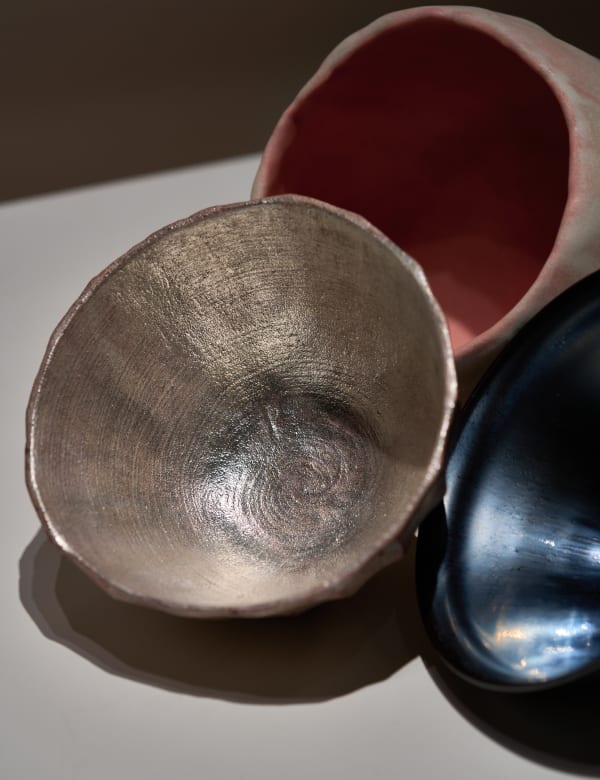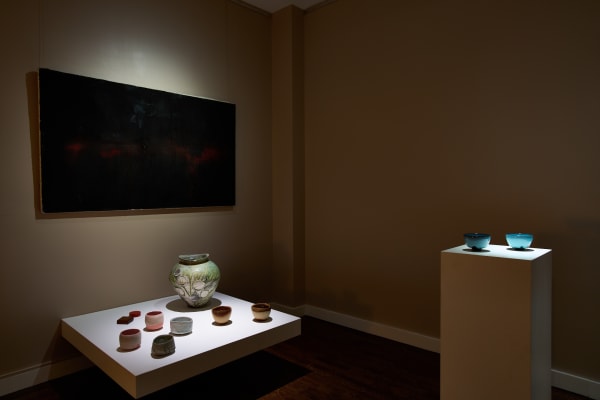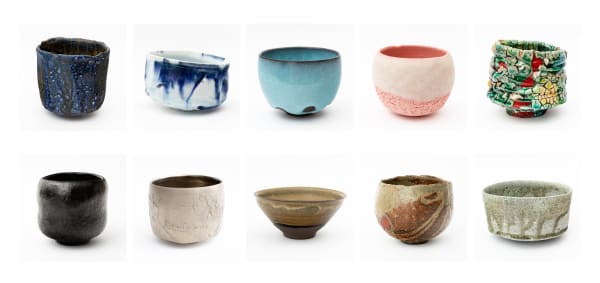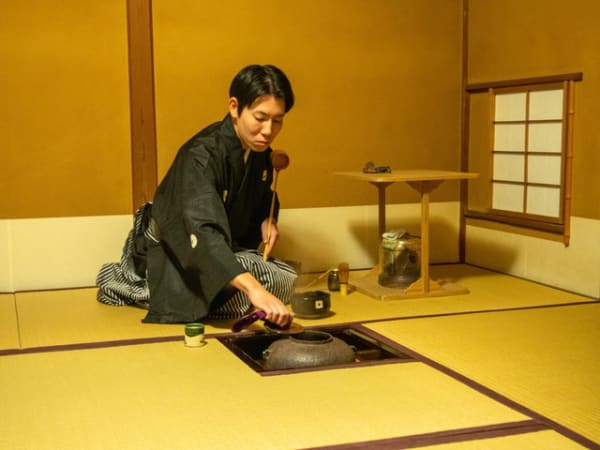Magic of the Tea Bowl : Volume 2
Magic of the Tea Bowl (Vol.2)
April 2022
The Japanese tea ceremony was first established during the 16th century and has continued to flourish to the present day. Closely related to Zen philosophy, it has held a central place in Japanese art, culture, and soul. Known as Chawan, tea bowls are handed from the tea master, who prepares the tea, to the guests, transmitting the scent and warmth of the tea through the hands to the lip. There is no other form of art that possesses such a close, physical sensitivity or arouses such a rich emotion. As you focus your feelings within the tea bowl, time is forgotten, and it is in the ensuing silence where the cosmos seems to spread out from within your hands. Your heart and body shaken with an indescribable pulse. It is as if you are being enchanted.
Numerous people participate in the tea ceremony at the same time and place, sharing tea from the same bowl, but this has become difficult due to the current circumstances. As a result, it has heightened our appreciation of the essence of the tea ceremony, which is summed up in the phrase, ‘Ichigo Ichie': Treasure every meeting, for it will never recur. It has never felt as important as it is now.
Ippodo Gallery held the "Magic of the Tea Bowl" exhibition last year, which was collected during the height of the pandemic (2020-2021) by visiting workshops around Japan. Many tea bowls left the hands of potters to the hands of their owners. Now more than ever, viewers become immersed in the bowl held in their hands, interacting with it and tasting the bowl’s infinite mercy.
In this second exhibition, we have added new artists and collected their masterpieces. At a time when people are unable to meet freely, these tea bowls will insinuate themselves into our hearts and link us all together. Tea bowls serve to drive away loneliness and create a new language. We hope that you will be able to come and discover the magic tea bowl that will become irreplaceable to you.
Shoko Aono
Magic of the Tea Bowl | Volume 2
June 2 – July 7
Opening Reception June 2, 5 – 8 pm
Ippodo Gallery is pleased to present another series of Magic of the Tea Bowl – Volume 2, an exhibition of tea bowls by eleven respected artists: Yasushi Fujihira, Hideyuki Fujisawa, Noriyuki Furutani, Hiroshi Goseki, Tomoyuki Hoshino, Morimistu Hosokawa, Takeshi Imaizumi, Koichiro Isezaki, Tsubusa Kato, Kohei Nakamura, Akio Niisato, Mokichi Otsuka, Kai Tsujimura, Shiro Tsujimura, Yui Tsujimura, Koichi Uchida, and Kodai Ujiie.
When you place a tea bowl in the palm of one's hand, all five senses become immediately activated. With your ability to feel the shape of the bowl and see the colors that transform in front of you, time and space disappear so that your soul can find respite from the ordinary day to day and feel the extraordinary power a tea bowl can offer.
Last year during the midst of the pandemic, Ippodo Gallery filled the void of our visitors with over one hundred tea bowls, which shined like the stars in the sky and kept our bond with each other from a distance. It became one of the most successful exhibits, so we are delighted to announce a sequel exhibition to continue the connection of the potter to the viewer.
This time, the gallery will feature a Japanese tea house designed by Shigeru Uchida. The architectural simplicity and refinement embody the spirit of the tea ceremony, offering a temporary space to escape from the complexities of daily life. The soft natural materials already evident in the construction of the teahouse echo in the additional accessories used for the tea ceremony, whether lacquer tea caddies, bamboo tea scoops, or fresh flowers amongst the ceramic art. The combination of our artists celebrates the spirit of circumspection and Japanese tea culture combined with true artistry.
We invite you to view our most recent tea bowl collection with exhibiting artist:
Yasushi Fujihira's (1963) work takes after his late father, Shin Fujihira. Yasushi's tea bowls are unique. The gold and silver coats take his work to another level. As most of his work uses rich, high silica content glazes, his work oozes attention and creates illustrious surfaces. His results are refreshingly individual and contemporary.
Hideyuki Fujisawa (1972) studied lacquer at Lacquer Kosha. His work aims to perfect a lacquer version of the Yuteki Tenmoku Tea Bowl. His transformative use of traditional lacquer materials explores the use of brushing pure layers of lacquer over a carved wooden surface. Fujisawa strategically and meticulously places mother of pearl on the lacquer tea bowls, adding a touch of elegance and refinement.
Noriyuki Furutani (1984) graduated from the Kyoto Saga University of Arts in 2005. Two years later, he apprenticed under Takashi Nakazato, making ceramics at the Anderson Ranch Arts Center in Colorado here in the United States. Currently residing in Shigaraki, Tenmoku Tea Bowls are his signature work. The hare's fur and oil spot glazing is thickly applied over a simple ceramic silhouette to create a beautiful, dark composition. The tenmoku glaze is incredibly sought after due to its complex technique and historical significance in central Asia, and Furutani has perfected his tenmoku formula.
Hiroshi Goseki (1988) studied Bizenware under Living National Treasure Jun Isezaki, and as a result, his pieces reflect the spirit and spontaneous nature of a Bizen firing. The building method used is a unique combination of hand-building and wheel throwing, producing undulating edges and striking silhouettes. Through the wood fire, his pieces retain incredible colors of blue and red.
Tomoyuki Hoshino (1976) entered Kyoto Prefectural Ceramic School in 2005. He was apprenticed to prominent Kyoto ceramic artist Yuuichi Ikai, for two years, after which he launched his own kiln in 2007. The colored cotton candy pink porcelain is coated with a translucent sugar-like white glaze layer. Hoshino's take on the tea bowl is youthful and soft, inspired by the silhouettes of dancing women.
Morimitsu Hosokawa's (1972) ceramic work varies in its visual language. Starting before his renowned father, Morihiro Hosokawa, a former apprentice to Shiro Tsujimura, Morimitsu carefully considers each tea bowl’s surface and how glazes can enhance or hide the surface of the clay.
Takeshi Imaizumi (1978) majored in Political Science and Economics, but his true passion was making ceramics. While learning from traditional masterpieces from the Song Dynasty in China, Imaizumi’s work combines Tenmoku and Celadon. He experiments with new glaze formulations and firing techniques to create his unique styles.
Koichiro Isezaki (1974) is the first son of Living National Treasure Jun Isezaki, and also carries on his generational ceramics practice of Bizen ware. While Koichiro Isezaki's pieces are ceramic, they always have a jagged, rugged rock-like feel, as if he chiseled them from stone. His works are profoundly unique yet unified by the Bizen characteristics they each hold. The rich and heavy clay he works with is the best clay his entire family has worked with for generations.
Tsubusa Kato (1962) was born into a family with a history of pottery making that stretches back to the Momoyama Period (1573-1615) and picked up the art form at a young age and built his kiln in Tomoka-chō, exhibited it at the Asahi Ceramic Art Exposition, and continues to produce his avant-garde razor sharp ceramic sculptures and free-spirited tea wares.
Kohei Nakamura (1948) is the third son of the famed potter Baizan Nakamura. After graduating from the sculpture department at the Tama University of Art, he honed his skill with years of practice. Recently he’s channeling the spirits of ancient chawan makers and succeeding in spades. Here are two examples, a large ‘deep-well’ Ido chawan and a very Chojiro-Esque Black Raku.
Mokichi Otsuka (1956) completed his studies in painting in 1981 and moved to Faenza, Italy, in 1994, deepening his course of study by graduating in Ceramic Art at the National Institute of Art and Ceramics G.Ballardini of Faenza in 1999. His father-in-law, Seizo Hayashiya, is the famed scholar in tea bowls. Otsuka moves beyond tea bowls to create a range of artworks with diligent and passionate work, such as cat sculptures.
Kai Tsujimura (1976) studied under his father, the famed potter Shiro Tsujimura. Kai Tsujimura then embarked on an independent career in 2001, building his own home and tunnel kiln in the hills of historic Nara Prefecture. As the youngest Tsujimura, he works in multiple genres like his father, including rough-hewn, natural-glazed Iga ware; white-slip kohiki; and painted translucent-glazed e-garatsu ware.
Shiro Tsujimura (1947) began his artistic career studying oil painting; however, he became disillusioned during this process and eventually abandoned the idea. Inspired by a classic Ido tea bowl from the Folk Museum in Japan, Tsujimura embarked on the journey of ceramic arts. He is known widely known as a master of pottery as his ceramic works reflect a level of sophistication and return to nature in the various clay bodies and glazes, he uses.
Yui Tsujimura (1975) is the elder of two sons of one of the most sought-after potters in Japan, Shiro Tsujimura. He and his brother learned the ceramic fundamentals and discipline from their father. Yui Tsujimura focuses on mastering a traditional technique using unglazed stoneware from early medieval Sue ware, which uses feldspar-rich clay from Shigaraki and Iga. He is known for his elegant use of natural ash glaze from natural pine. The blown ash forms green and blue markings, which appear like crystals in a cave, creating a sense of airiness and breath within his tea bowls.
Koichi Uchida (1975) observed multiple pottery-making methods and ended up receiving not only an artistic but also cultural education. His exposure to different forms allows his works to take on varying styles, shapes, and textures, from bronze teaware to white porcelain plates and jars. In 1992, Uchida established an independent studio in Yokkaichi, Mie Prefecture, and in 2015, Uchida opened the BANKO Archive Design Museum, a private museum dedicated to the promotion of Banko ware.
Kodai Ujiie (1990) got his bachelor's and master's degree from the Tohoku University of Art and Design. He is currently working in Toki-shi, creating pieces with refreshing construction of kintsugi into his unique use style. The celadon glazes of pink, blue, green, and red lacquer inlay are an innovative and unique technique part of Ujiie's visual language. The organic and grotesque lines and forms created, inspired by human layers of skin and flesh, are ever-present.
